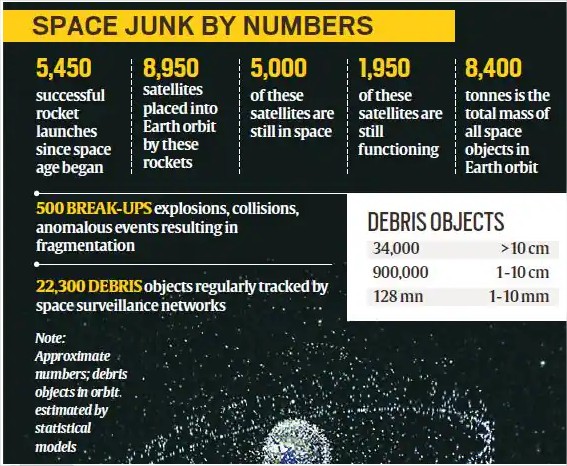7667766266
enquiry@shankarias.in
Recently, ISRO’s rocket debris was found washing the shores of beach of Jurian Bay in Western Australia.

With the provision of Liability Convention, Canada sought damages from the then Soviet Union, for a satellite with radioactive substance that fell into an uninhabited region in its northern territory in 1978.
Steps taken to deal with Space Junk
References